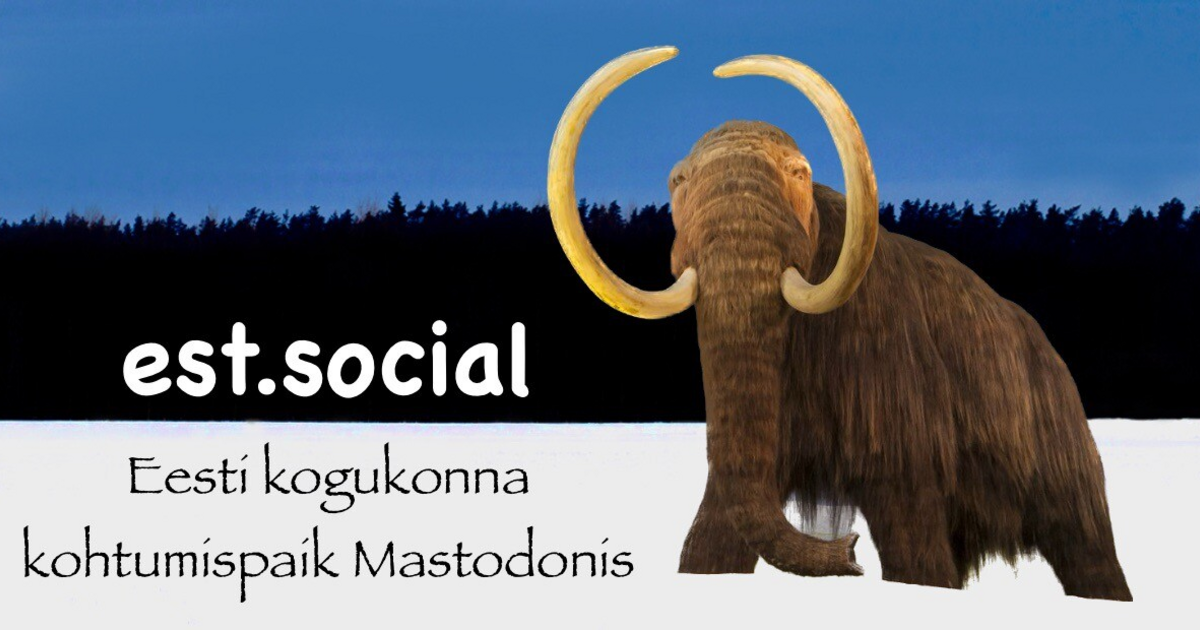LucCogZest<p>Now on ResearchGate: A free <a href="https://fediscience.org/tags/preprint" class="mention hashtag" rel="nofollow noopener noreferrer" target="_blank">#<span>preprint</span></a> of an article describing the theory behind the <a href="https://fediscience.org/tags/cognitiveShuffle" class="mention hashtag" rel="nofollow noopener noreferrer" target="_blank">#<span>cognitiveShuffle</span></a> is available on ResearchGate. It's called the somnolent information processing theory. It will be in the upcoming <a href="https://fediscience.org/tags/CambridgeUniversityPress" class="mention hashtag" rel="nofollow noopener noreferrer" target="_blank">#<span>CambridgeUniversityPress</span></a> book on sleep theories edited by Daniel Kay:<br><a href="https://www.researchgate.net/publication/390502925_Towards_a_somnolent_information-processing_theory_Understanding_the_human_sleep-onset_control_system_from_an_integrative_design-oriented_perspective" rel="nofollow noopener noreferrer" translate="no" target="_blank"><span class="invisible">https://www.</span><span class="ellipsis">researchgate.net/publication/3</span><span class="invisible">90502925_Towards_a_somnolent_information-processing_theory_Understanding_the_human_sleep-onset_control_system_from_an_integrative_design-oriented_perspective</span></a> <a href="https://fediscience.org/tags/sleep" class="mention hashtag" rel="nofollow noopener noreferrer" target="_blank">#<span>sleep</span></a> <a href="https://fediscience.org/tags/insomnia" class="mention hashtag" rel="nofollow noopener noreferrer" target="_blank">#<span>insomnia</span></a></p>
Viimatised otsingud
Pole viimatisi otsinguid
Otsimisvalikud
Saadaval vaid kui sisse logitud.
est.social on üks paljudest sõltumatutest Mastodoni serveritest, mida saab fediversumis osalemiseks kasutada.

est.social on mõeldud Eestis üldkasutatavaks Mastodoni serveriks.
est.social is meant to be a general use Mastodon server for Estonia.
Administraator:
Serveri statistika:
84aktiivsed kasutajad
est.social: Teave · Profiilikataloog · Isikuandmete kaitse
Mastodon: Teave · Tõmba äpp · Kiirklahvid · Lähtekood · v4.3.6+est
#preprint
8 postitusega · 7 osalejaga · 0 postitust täna
LucCogZest<p><a href="https://fediscience.org/tags/Preprint" class="mention hashtag" rel="nofollow noopener noreferrer" target="_blank">#<span>Preprint</span></a> for our paper on <a href="https://fediscience.org/tags/sleep" class="mention hashtag" rel="nofollow noopener noreferrer" target="_blank">#<span>sleep</span></a> onset and <a href="https://fediscience.org/tags/insomnolence" class="mention hashtag" rel="nofollow noopener noreferrer" target="_blank">#<span>insomnolence</span></a> : [PsyArXiv Preprints | Towards a somnolent information-processing theory: Understanding the human sleep-onset control system from an integrative design-oriented perspective]( <a href="https://osf.io/preprints/psyarxiv/8n6qc_v1" rel="nofollow noopener noreferrer" translate="no" target="_blank"><span class="invisible">https://</span><span class="ellipsis">osf.io/preprints/psyarxiv/8n6q</span><span class="invisible">c_v1</span></a> )</p>
Bibliolater 📚 📜 🖋<p>🔴 **Long-term hunter-gatherer continuity in the Rhine-Meuse region was disrupted by local formation of expansive Bell Beaker groups**</p><p>“_We document an exception to this pattern in the wider Rhine-Meuse area in communities in the wetlands, riverine areas, and coastal areas of the western and central Netherlands, Belgium and western Germany, where we assembled genome-wide data for 109 people 8500-1700 BCE. Here, a distinctive population with high hunter-gatherer ancestry (∼50%) persisted up to three thousand years later than in continental European regions, reflecting limited incorporation of females of Early European Farmer ancestry into local communities._”</p><p>Olalde, I. et al. (2025) 'Long-term hunter-gatherer continuity in the Rhine-Meuse region was disrupted by local formation of expansive Bell Beaker groups,' bioRxiv (Cold Spring Harbor Laboratory) [Preprint]. <a href="https://doi.org/10.1101/2025.03.24.644985" rel="nofollow noopener noreferrer" target="_blank"><span class="invisible">https://</span><span class="ellipsis">doi.org/10.1101/2025.03.24.644</span><span class="invisible">985</span></a>.</p><p><a href="https://qoto.org/tags/Preprint" class="mention hashtag" rel="nofollow noopener noreferrer" target="_blank">#<span>Preprint</span></a> <a href="https://qoto.org/tags/Science" class="mention hashtag" rel="nofollow noopener noreferrer" target="_blank">#<span>Science</span></a> <a href="https://qoto.org/tags/Biology" class="mention hashtag" rel="nofollow noopener noreferrer" target="_blank">#<span>Biology</span></a> <a href="https://qoto.org/tags/Genetics" class="mention hashtag" rel="nofollow noopener noreferrer" target="_blank">#<span>Genetics</span></a> <a href="https://qoto.org/tags/Archaeology" class="mention hashtag" rel="nofollow noopener noreferrer" target="_blank">#<span>Archaeology</span></a> <a href="https://qoto.org/tags/Archaeodons" class="mention hashtag" rel="nofollow noopener noreferrer" target="_blank">#<span>Archaeodons</span></a> <a href="https://qoto.org/tags/Anthropology" class="mention hashtag" rel="nofollow noopener noreferrer" target="_blank">#<span>Anthropology</span></a> <a href="https://qoto.org/tags/Europe" class="mention hashtag" rel="nofollow noopener noreferrer" target="_blank">#<span>Europe</span></a> <span class="h-card"><a href="https://a.gup.pe/u/archaeodons" class="u-url mention" rel="nofollow noopener noreferrer" target="_blank">@<span>archaeodons</span></a></span></p>
Ajay Iyer<p>Happy to share my latest preprint: "Using network component analysis to study axenisation strategies for phototrophic eukaryotic microalgae"</p><p>(DOI: <a href="http://dx.doi.org/10.1101/2025.03.07.641979" rel="nofollow noopener noreferrer" translate="no" target="_blank"><span class="invisible">http://</span><span class="ellipsis">dx.doi.org/10.1101/2025.03.07.</span><span class="invisible">641979</span></a>).</p><p>We revisited all publications in the last century focusing on the axenisation of microalgae, and used Network Component Analysis to understand how workflows can be (re-)desgined to remove contaminating microbes from microalgal cultures.</p><p><a href="https://mastodon.social/tags/preprint" class="mention hashtag" rel="nofollow noopener noreferrer" target="_blank">#<span>preprint</span></a> <a href="https://mastodon.social/tags/microalgae" class="mention hashtag" rel="nofollow noopener noreferrer" target="_blank">#<span>microalgae</span></a> <span class="h-card" translate="no"><a href="https://a.gup.pe/u/academicchatter" class="u-url mention" rel="nofollow noopener noreferrer" target="_blank">@<span>academicchatter</span></a></span> <span class="h-card" translate="no"><a href="https://mander.xyz/c/academia" class="u-url mention" rel="nofollow noopener noreferrer" target="_blank">@<span>academia</span></a></span></p>
Amin Girasol<p>Can someone share a copy of this paper, please? I'm not finding it in the usual places.</p><p>Anderson, M.M. "AI as Philosophical Ideology: A Critical look back at John McCarthy’s Program". Philos. Technol. 37, 44 (2024). <a href="https://doi.org/10.1007/s13347-024-00731-1" rel="nofollow noopener noreferrer" translate="no" target="_blank"><span class="invisible">https://</span><span class="ellipsis">doi.org/10.1007/s13347-024-007</span><span class="invisible">31-1</span></a></p><p>Please boost!</p><p><a href="https://oldbytes.space/tags/SciHub" class="mention hashtag" rel="nofollow noopener noreferrer" target="_blank">#<span>SciHub</span></a> <a href="https://oldbytes.space/tags/Academic" class="mention hashtag" rel="nofollow noopener noreferrer" target="_blank">#<span>Academic</span></a> <a href="https://oldbytes.space/tags/PrePrint" class="mention hashtag" rel="nofollow noopener noreferrer" target="_blank">#<span>PrePrint</span></a> <a href="https://oldbytes.space/tags/philosphy" class="mention hashtag" rel="nofollow noopener noreferrer" target="_blank">#<span>philosphy</span></a> <a href="https://oldbytes.space/tags/ideology" class="mention hashtag" rel="nofollow noopener noreferrer" target="_blank">#<span>ideology</span></a> <a href="https://oldbytes.space/tags/aicritique" class="mention hashtag" rel="nofollow noopener noreferrer" target="_blank">#<span>aicritique</span></a></p>
Dr Micha Campbell<p>🚨 New preprint 🚨 </p><p>Hydrology and cave (and cave hydrology!) enthusiasts may enjoy this preprint just posted today for community review in the <a href="https://fediscience.org/tags/EGU" class="mention hashtag" rel="nofollow noopener noreferrer" target="_blank">#<span>EGU</span></a> journal <a href="https://fediscience.org/tags/HESS" class="mention hashtag" rel="nofollow noopener noreferrer" target="_blank">#<span>HESS</span></a>. Led by former <a href="https://fediscience.org/tags/UNSW" class="mention hashtag" rel="nofollow noopener noreferrer" target="_blank">#<span>UNSW</span></a> student, Christina Song, with <span class="h-card" translate="no"><a href="https://aus.social/@Andbaker" class="u-url mention" rel="nofollow noopener noreferrer" target="_blank">@<span>Andbaker</span></a></span> and myself, we looked at recharge thresholds (amount of precipitation needed for recharge to occur in a cave), and how they changed after a fire. </p><p><a href="https://egusphere.copernicus.org/preprints/2025/egusphere-2025-84/" rel="nofollow noopener noreferrer" translate="no" target="_blank"><span class="invisible">https://</span><span class="ellipsis">egusphere.copernicus.org/prepr</span><span class="invisible">ints/2025/egusphere-2025-84/</span></a></p><p>The preprint is open now for community discussion, and will be accepting comments until 23 April.</p><p><a href="https://fediscience.org/tags/Hydrology" class="mention hashtag" rel="nofollow noopener noreferrer" target="_blank">#<span>Hydrology</span></a> <a href="https://fediscience.org/tags/groundwater" class="mention hashtag" rel="nofollow noopener noreferrer" target="_blank">#<span>groundwater</span></a> <a href="https://fediscience.org/tags/preprint" class="mention hashtag" rel="nofollow noopener noreferrer" target="_blank">#<span>preprint</span></a> <a href="https://fediscience.org/tags/fire" class="mention hashtag" rel="nofollow noopener noreferrer" target="_blank">#<span>fire</span></a></p>
AvastaLaiv lõimed
Mastodon on parim viis olemaks kursis sellega, mis toimub.
Jälgi ükskõik keda kogu fediversumist ja näe kõike ajalises järjestuses. Ei mingeid algoritme, reklaame või klikipüüdjaid segamas.
Loo kontoLogi sisseLohista & aseta üleslaadimiseks
